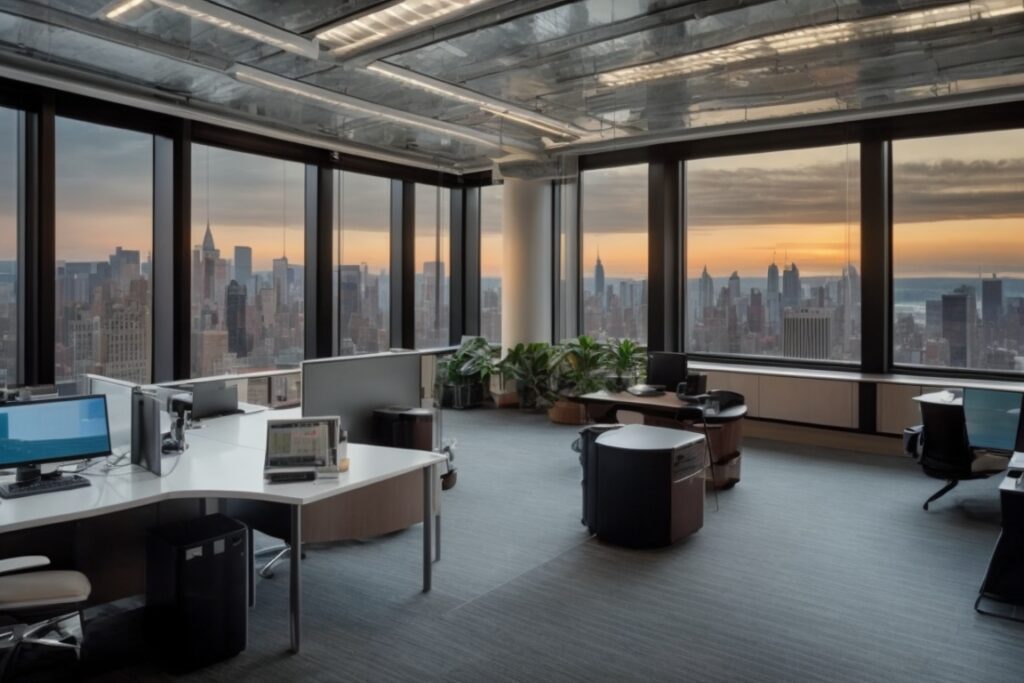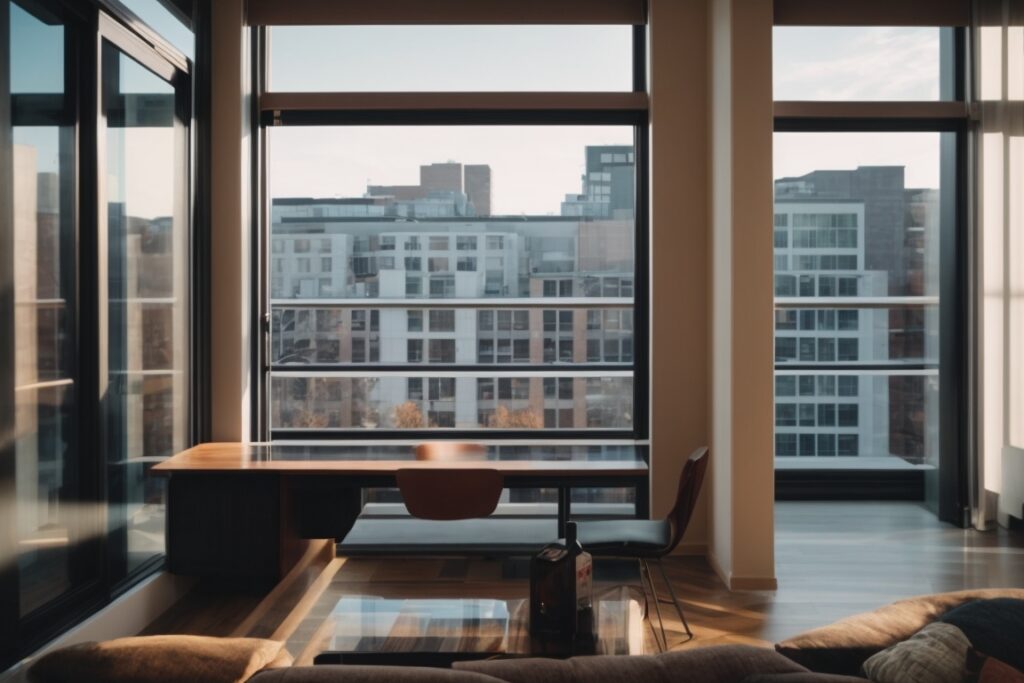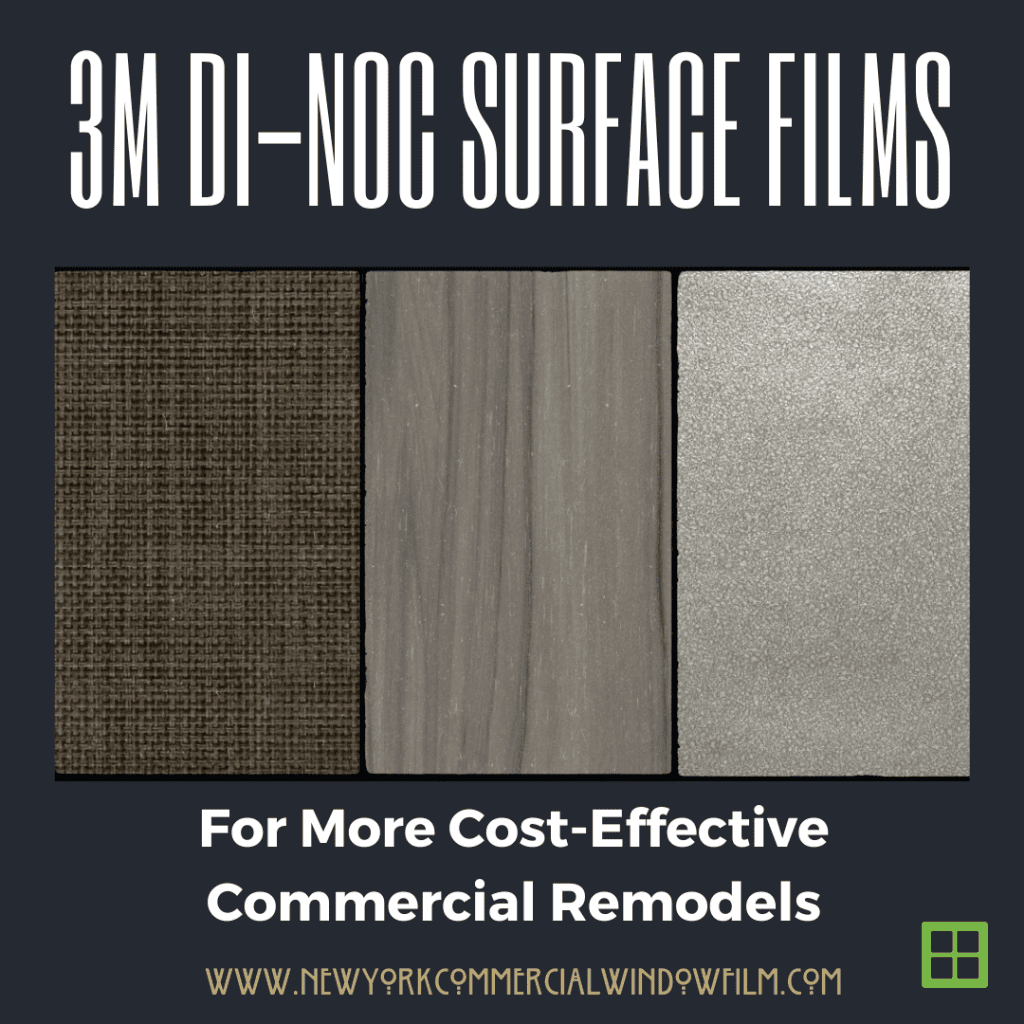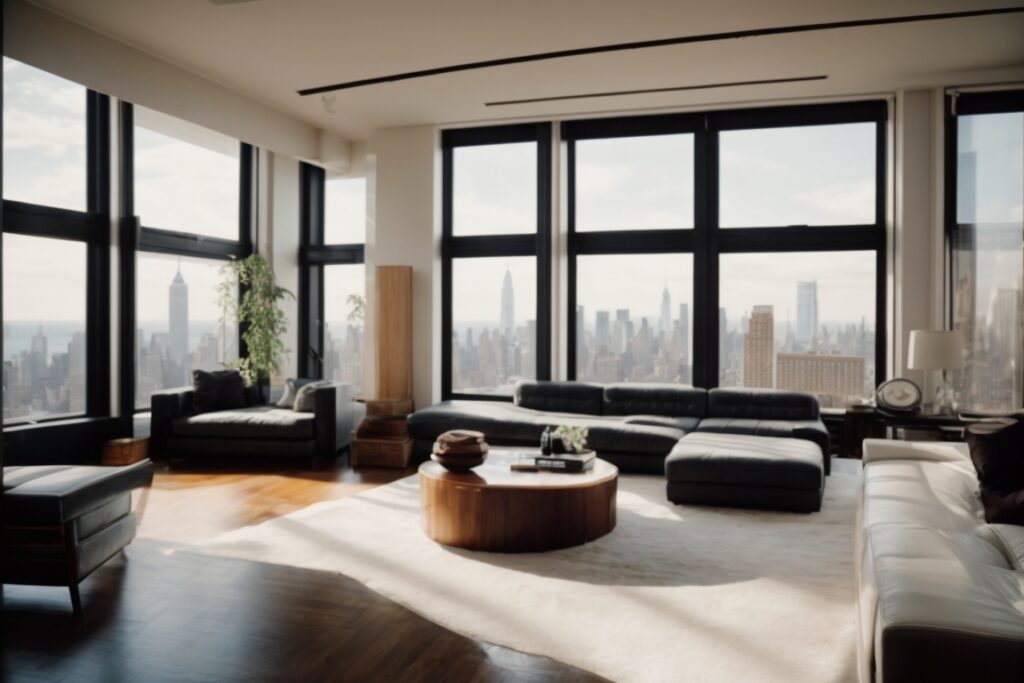Embracing Low-E Window Films in New York: A Move Towards Energy Efficiency
Amid the bustling streets and towering skyscrapers of New York, there’s an invisible challenge that many homeowners and tenants face – maintaining a comfortable indoor environment without breaking the bank on energy costs. The introduction of low-e window film in New York has emerged as a beacon of hope for many, promising to uphold comfort while significantly reducing energy consumption. Despite its benefits, a vast majority remain unaware of how this innovative technology can transform their living spaces into bastions of comfort and efficiency.
Low-e, or low-emissivity, window films are designed to reflect infrared light, keeping heat out during summer and retaining warmth during winter. This dual action makes them an invaluable asset in a city known for its extreme weather variations. However, without widespread knowledge and understanding, many New Yorkers continue to struggle with high utility bills and uncomfortable indoor temperatures—a situation that could easily be mitigated with the adoption of low-e window film technology.
The awareness around energy-efficient solutions in New York homes needs a significant boost. As the urban landscape continues to evolve, so should our approach to energy consumption and environmental conservation. The role of low-e window film in this transformation is undeniable, yet the gap between its potential benefits and public knowledge remains a hurdle. By enlightening homeowners and renters about low-e window film, we can take a giant leap towards creating more sustainable, comfortable, and economically viable living environments across New York.
Introducing the Energy Efficiency Challenge in New York Homes
Energy efficiency in residential spaces is becoming an increasingly pressing issue, especially in bustling metropolitan areas like New York. The primary concern revolves around the inefficiency of traditional glass windows which are common in most homes. These windows, while providing essential daylight and views, are often significant contributors to heat loss during winter and excessive heat gain in summer. This lack of energy efficiency not only leads to uncomfortable living conditions but also spikes in utility bills.
In this context, low-e window films emerge as a promising solution to tackle the energy inefficiency problem. However, despite their potential, there exists a considerable gap in the widespread understanding and adoption of these energy-saving alternatives among New York homeowners. The challenge, therefore, is not just about finding a solution to the energy inefficiency but also raising awareness and educating homeowners about the benefits and importance of adopting low-e window films.
Startling Facts About Low-E Window Film in New York
In the bustling urban landscape of New York, buildings contribute to nearly 70% of the city’s energy consumption, with traditional windows being one of the largest sources of energy loss. Shockingly, installing low-e window film can reduce this energy loss by up to 30%, illustrating its significant potential for energy savings. Moreover, with New York experiencing temperature extremes, the demand for heating and cooling in homes skyrockets, further emphasizing the crucial role of energy-efficient solutions like low-e window film in mitigating excessive energy use and promoting sustainability in the city’s dense environment.
The Problem with Inadequate Window Insulation in New York Homes
New York’s diverse climate, with its cold, snowy winters and hot, humid summers, presents a unique challenge to homeowners trying to maintain a comfortable and energy-efficient home. Traditional windows, without low-emissivity (low-E) window film, significantly contribute to this challenge. The problem begins with the basic physics of heat exchange: in winter, heat escapes through windows, making heating systems work overtime, while in summer, the outside heat easily transfers indoors, leading to increased reliance on air conditioning.
This constant battle against the elements not only makes it difficult to maintain a stable and comfortable indoor temperature but also leads to skyrocketing energy bills. The financial burden of inefficient energy use can strain homeowners’ budgets, especially in areas with extreme weather conditions. Moreover, traditional windows without any energy-efficient upgrades, such as low-E films, contribute to the home’s carbon footprint by increasing the demand on heating and cooling systems.
Another aspect of this problem is the wear and tear on HVAC systems. Frequent and prolonged use to combat temperatures seeping through inefficient windows can lead to early system failure, necessitating costly repairs or replacements. This not only adds to the financial burden on homeowners but also disrupts the comfort and routine of their daily lives.
Therefore, the lack of low-E window film in New York homes is not merely a matter of comfort; it represents a significant and ongoing financial and environmental problem that impacts the quality of life, the durability of home infrastructure, and the overall energy efficiency of the residence.
Understanding the Problem: The Challenge of Maintaining Comfort and Energy Efficiency in New York Homes
Living in New York comes with its unique set of challenges, particularly when it comes to maintaining a comfortable home environment throughout the seasons. The problem that homeowners face is twofold: keeping their homes warm during the brutal Northeast winters and cool during the humid summers, all while trying to manage skyrocketing energy costs. This struggle leads to a pressing need for a solution that can address both thermal efficiency and cost savings without compromising one for the other.
The core issue stems from outdated or inefficient windows, which are notorious for letting heat escape in the winter and infiltrating homes with unwanted heat during the summer. This inefficiency not only compromises the comfort within these living spaces but also results in excessive energy consumption as heating and cooling systems work overtime to compensate. Understanding this problem is crucial for New York homeowners, as it directly impacts their wallets, comfort, and the overall energy efficiency of their homes. The quest for an effective solution brings low-e window film into focus as a promising candidate to mitigate these challenges.
Transforming New York Apartments with Low-E Window Film
In bustling New York City, the Johnson family decided to retrofit their charming, yet drafty apartment with low-e window film. Facing stubborn winter chills and unbearable summer heat, this simple upgrade made a striking difference. Just months after installation, they reported a significant drop in their energy bills—nearly 20%. Moreover, their home became a haven of comfort, maintaining a stable temperature regardless of the season. This real-life example underscores the practicality and efficiency of low-e window film in urban homes, presenting a compelling case for its adoption in New York’s diverse residences.
Consequences of Ignoring Low-E Window Film Installation in New York
Overlooking the installation of low-e window film in New York residences is a decision that invites a host of negative outcomes. The absence of this energy-efficient solution impacts homeowners more severely than many might anticipate, especially in the unique climatic conditions of New York.
Primarily, ignoring the benefits of low-e window film results in significant energy loss. Windows without this protective layer allow heat to escape during the winter and infiltrate homes during the summer, leading to uncomfortable living conditions and excessive use of heating and cooling systems. This not only diminishes the comfort and livability of your home but also translates to higher utility bills—a financial strain no New Yorker wants.
Moreover, the lack of low-e window film accelerates the wear and tear on HVAC systems due to their need to work harder to maintain indoor temperatures. This can lead to more frequent repairs or even premature replacement of expensive equipment. Additionally, the increased energy consumption contributes to a larger carbon footprint, going against the growing trend of environmental consciousness among New Yorkers.
Ignoring the installation of low-e window film in New York, therefore, not only burdens homeowners with higher costs and diminished comfort but also impacts the longevity of HVAC systems and the environment. This makes the choice to forgo this essential home improvement not just a personal oversight, but a communal concern.
Economic Impacts of Neglecting Low-E Window Film in New York Homes
Ignoring the installation of low-e window film in New York homes can have significant economic repercussions for homeowners. Economic security is directly impacted by energy consumption costs that could spiral out of control without these energy-efficient barriers. In seasons of extreme temperatures, windows without low-e films can lead to substantial heat loss or gain, which in turn, forces heating and cooling systems to work overtime. This inefficiency is reflected in soaring utility bills, putting a strain on household budgets. Furthermore, the lack of low-e window film could potentially decrease a home’s market value, as buyers increasingly prioritize energy efficiency in their property investments.
Unlocking Savings and Comfort with Low-E Window Film in New York
New York homes face a unique set of challenges when it comes to maintaining comfort and efficiency throughout the shifting seasons. From the biting cold of winter to the often sweltering heat of summer, homeowners search for solutions that not only provide relief but also offer long-term savings. This is where low-E window film shines, positioning itself as the missing piece in the quest for an energy-efficient, comfortable home in New York.
Low-E window film stands as a testament to modern technological advancements in home energy efficiency. It targets the core issues New Yorkers face with their windows: excessive heat loss in the winter and too much heat gain during the summer months. By reflecting and absorbing infrared radiation, low-E window film keeps the warmth inside during colder months and reflects solar heat away from the home when the temperatures rise. This dual capability ensures homes remain at a more consistent and comfortable temperature year-round, reducing the reliance on heating and cooling systems.
What truly sets low-E window film apart in the New York market is its cost-effectiveness. Unlike full window replacements, applying low-E film is a fraction of the cost and can be completed with minimal disruption to daily life. Over time, the energy savings realized from reduced heating and cooling needs can accumulate, offering New York homeowners a significant return on investment.
By addressing the specific challenges of New York’s climate, low-E window film positions itself as a prime solution for those seeking to enhance their home’s energy efficiency and comfort. It’s not just an investment into a home’s functionality; it’s a step towards creating a more sustainable, cost-efficient, and comfortable living environment in the Empire State.
Harnessing the Low-E Legacy: How Energy-Efficient Window Films Envelope New York Homes in Comfort and Savings
Low-E window film stands as a revolutionary solution for New Yorkers seeking to enhance the energy efficiency and comfort of their homes. Specifically designed to reflect and retain indoor heat during winters and repel outside heat in summers, low-E window films play a critical role in maintaining optimal indoor temperatures throughout the year.
This ingenious technology not only addresses the perennial problem of fluctuating indoor climates in New York’s diverse weather but also significantly reduces energy consumption. By stabilizing internal temperatures, low-E window films diminish the reliance on heating and cooling systems, leading to considerable savings on utility bills. More than just a cost-saving measure, this innovative window film ensures a more comfortable and consistent living environment, free from the extremes of New York’s weather patterns.
The low-E window film’s ability to filter out UV rays further protects homeowners and their belongings from sun damage, preserving the integrity of furnishings and flooring while promoting a healthier indoor space. Through its multifaceted benefits, the low-E window film encapsulates a solution that not only elevates home comfort but also contributes to a more sustainable and energy-efficient lifestyle in New York.
Benefits and Features: Low-E Window Film in New York
Low-E window film is a cutting-edge solution for New York homeowners looking to enhance their home’s energy efficiency and comfort. This innovative film reflects heat, helping to maintain a consistent temperature across all seasons, which translates to lower heating and cooling costs. In addition, it significantly reduces the harmful UV rays entering the home, protecting furniture and flooring from fading. Low-E window film also improves privacy and security by adding an extra layer to windows without sacrificing natural light. Its durability means it’s a long-term investment that requires minimal maintenance, making it an economical and efficient choice for New Yorkers aiming to upgrade their home’s performance and protection.
Low-E Window Film Success Stories in New York
In the bustling streets of New York, where energy efficiency and home comfort are of paramount importance, low-e window film is making a significant difference. Take, for example, the Johnson family in Manhattan, who decided to install low-e window film in their apartment. They were amazed by the immediate effect on their living space. The Johnsons noticed a substantial decrease in their energy bills, especially during the notoriously hot summers and cold winters New York is known for. More so, they highlighted the added benefit of reduced glare, which made their home environment much more comfortable.
Another noteworthy testimonial comes from the Wilsons in Brooklyn. After struggling with the constant noise and lack of privacy in their ground-floor apartment, they opted for low-e window film installation. Not only did it enhance their home’s energy efficiency, but it also significantly improved sound insulation and provided them with the privacy they longed for. “It’s like living in a completely new apartment,” they remarked, proud of their decision and the transformative impact of the low-e window film.
Case Study: The Thompson Residence – A Beacon of Efficiency in New York
In the bustling streets of New York, the Thompson family sought to reduce their carbon footprint and energy bills. Installing low-e window film transformed their home into an oasis of comfort and efficiency. Despite the city’s extreme seasonal temperatures, they reported a significant decrease in energy consumption and costs. Their commitment mirrors the potential for low-e window film to redefine New York homes. Be part of the change — enhance your home with low-e window film today and join the Thompsons in leading a more sustainable, cost-effective lifestyle.







About The Author: Angus Faith
Angus Faith is a window film installer with a professional background in institutional and commercial building construction and sustainable building design. After leaving his hometown in Scotland, Angus relocated to New York with his wife and family. He has been installing window film for commercial buildings in New York for over ten years and has overseen numerous projects for schools, retail buildings, office buildings, and hotels. Over the years, his training and research has allowed him to become a product expert, and gain an in-depth understanding of products from top brands like 3M, LLumar, Vista, and more. When he's not consulting on commercial window film projects, Angus enjoys spending his time visiting New York's many parks and museums and traveling abroad whenever he gets the chance.
More posts by Angus Faith